During the early days of COVID, we were engaged to move a studio out of an old location in a hurry. There had been a long-simmering dispute with the landlord, who finally changed the locks (illegally), but then gave 30 days’ notice, and so on. Regardless, we were building a new studio a few blocks away and were told to take anything usable, which we did.
I noticed the old RCA on-air light for one of the studios and the owner said he’d like to have that installed at the new place. There were two other ones that were not working. In total, we ended up with three of these:
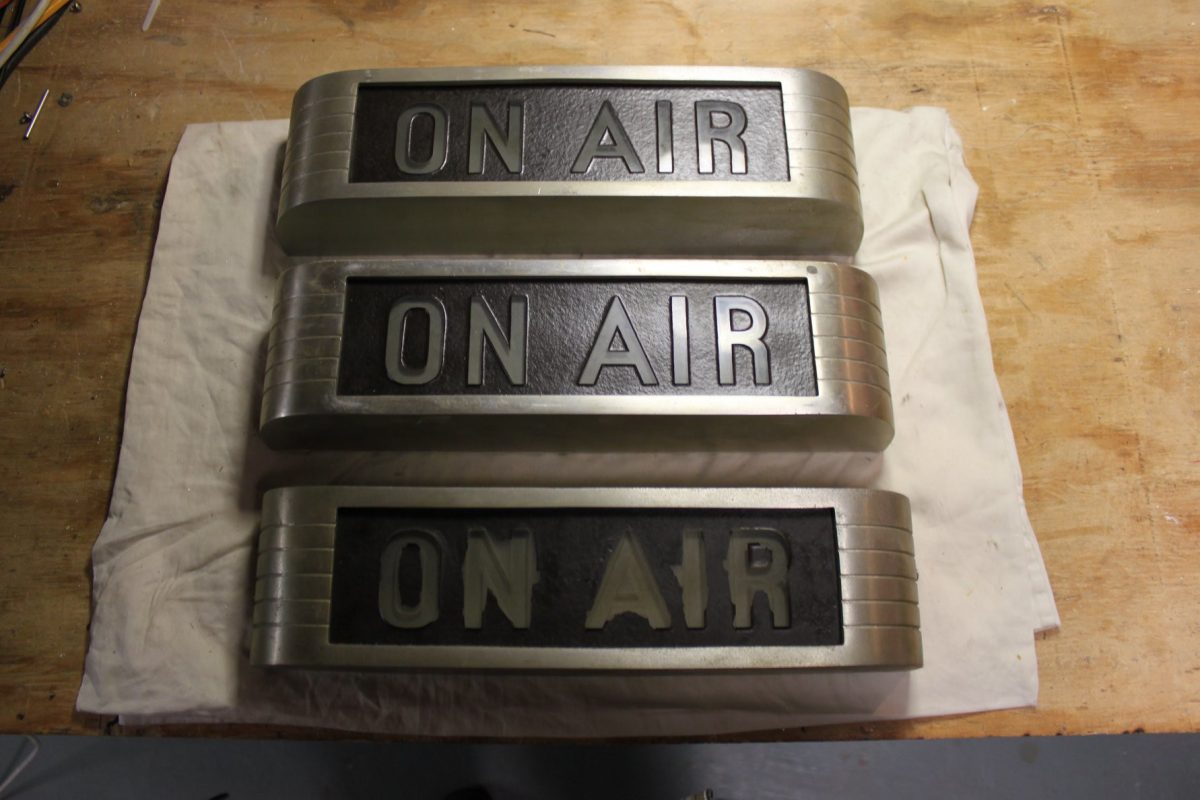
As far as I can tell, they dated from around 1960 and were filthy. Sixty years of dust, dirt, cigarette smoke, etc needed to be scrubbed off of them.
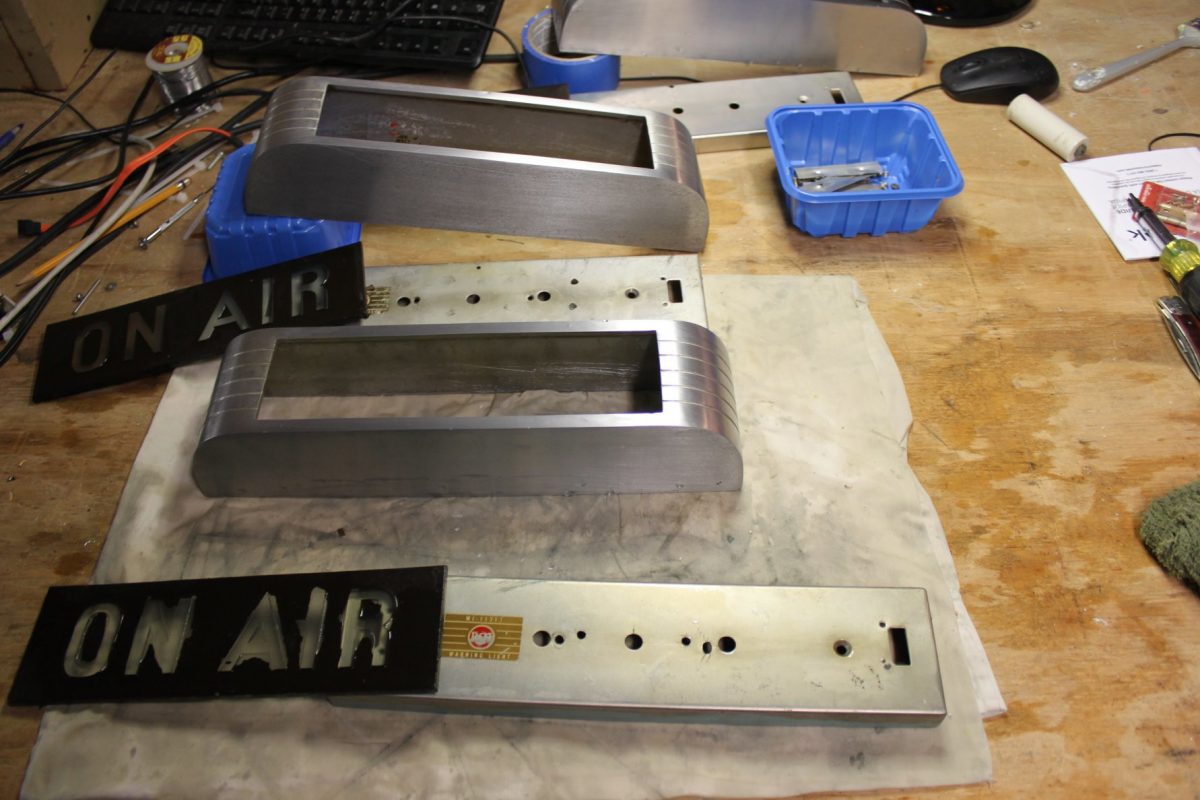
The original light bulb was a bi-pin 110-volt incandescent lamp. Over the years, the sockets became brittle and fell apart.
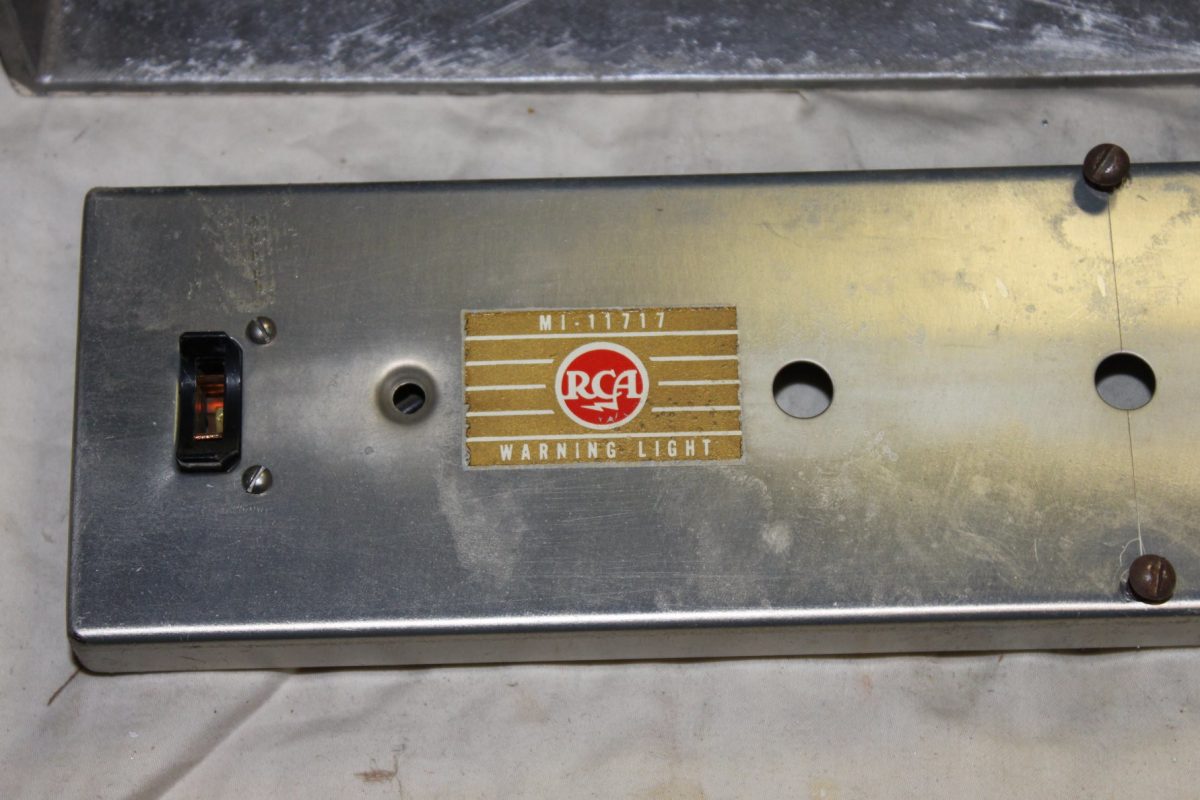
Rather than trying to source replacements for the lamp holder, I figured it was easier to install a 12 VDC LED module. That way this would become a low-voltage device and the LED module should last for as long as the studio is in use.
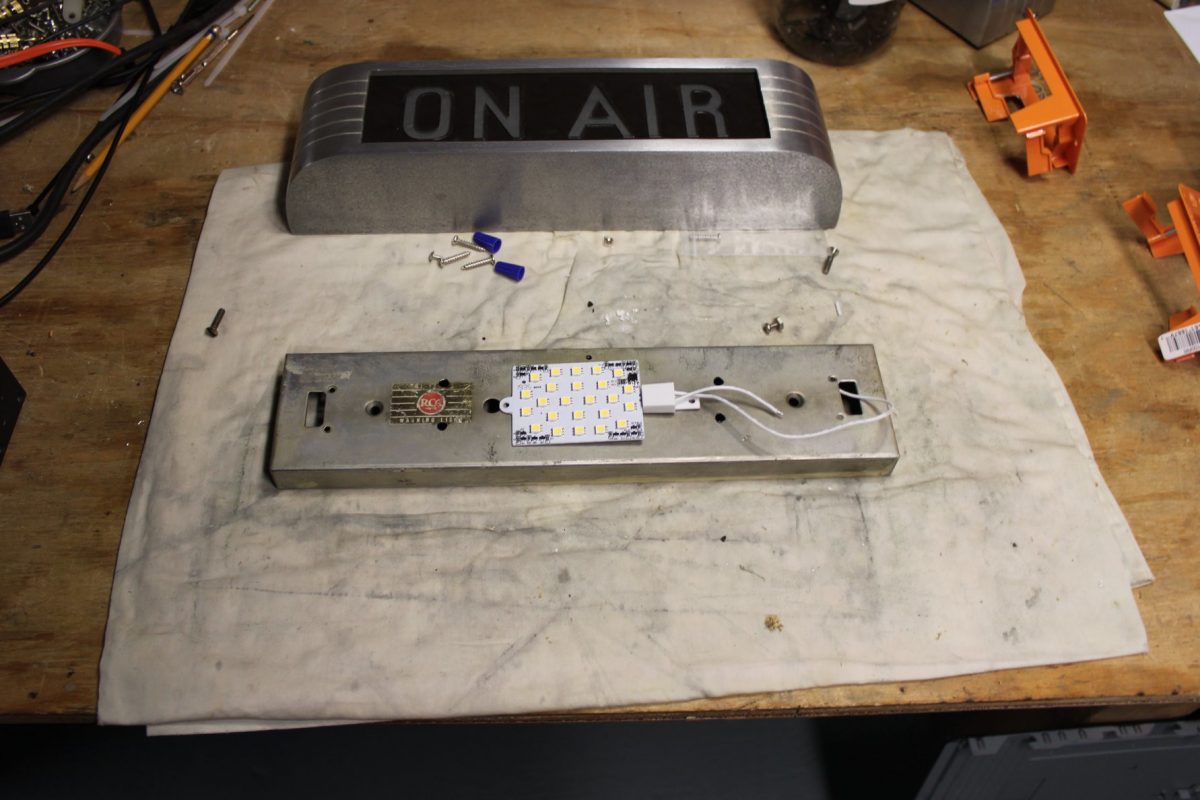
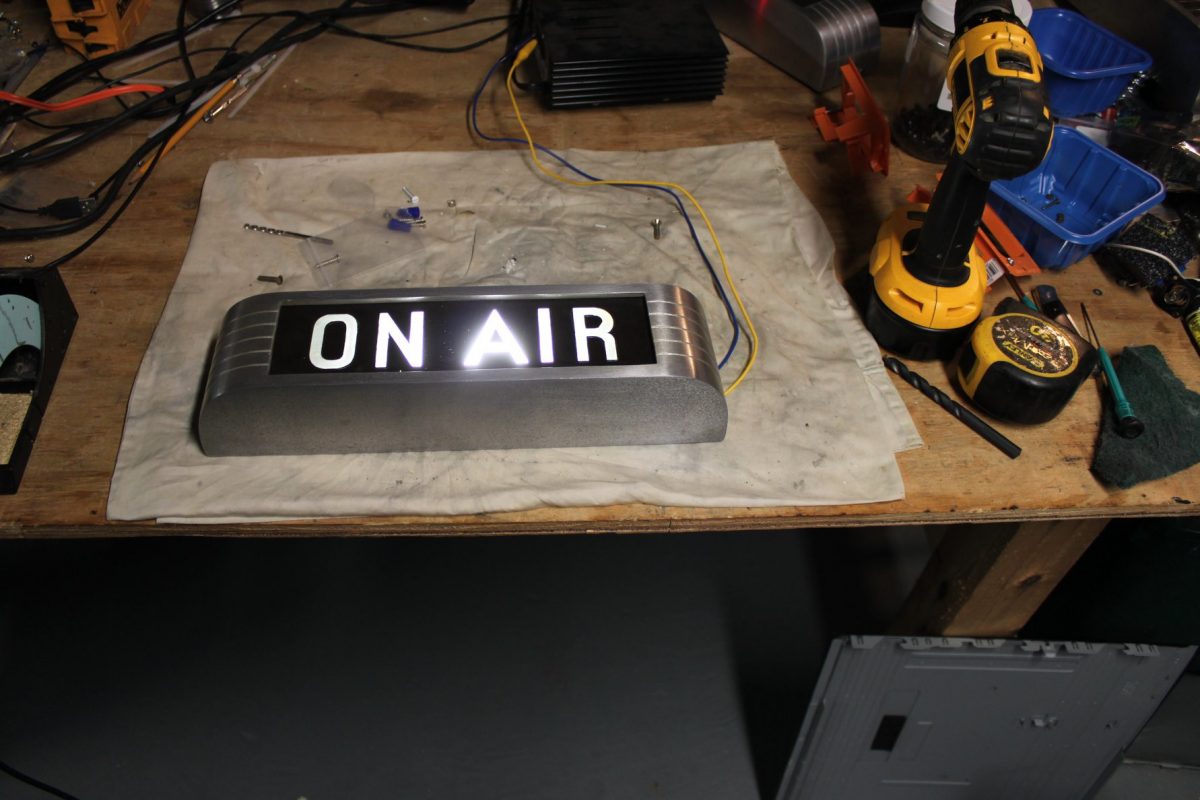
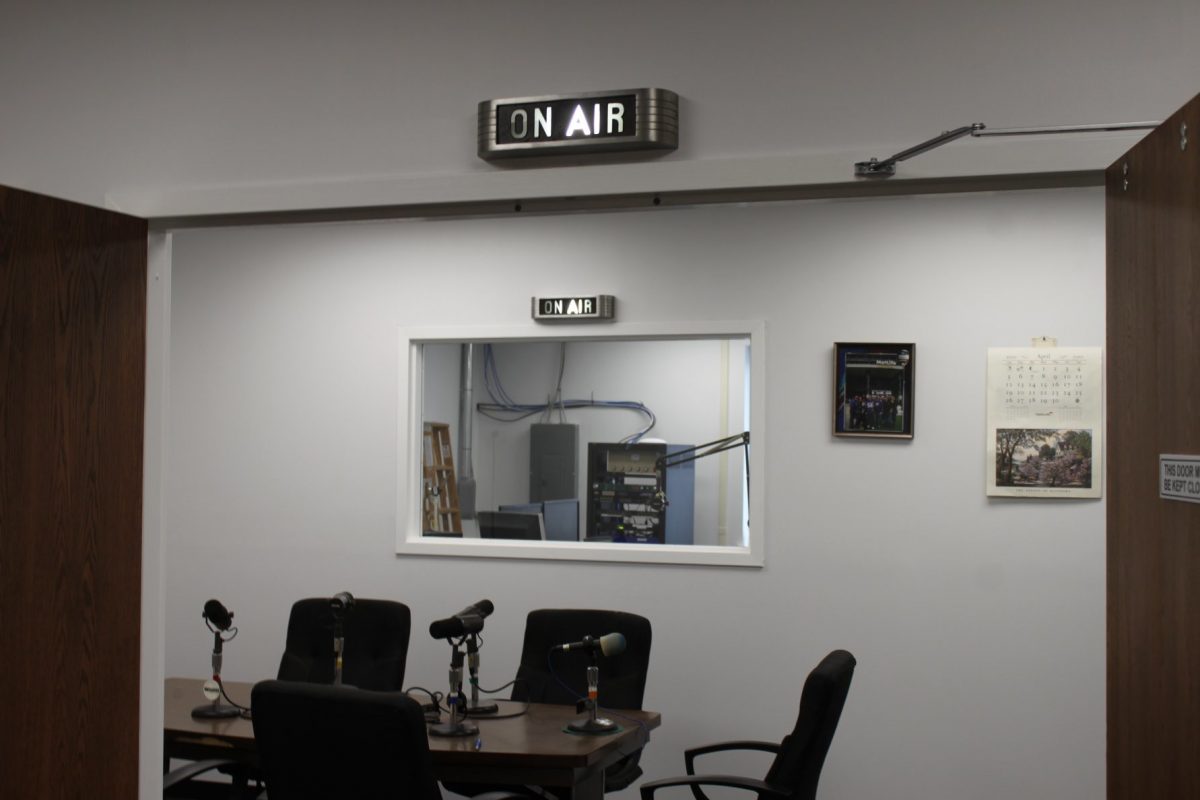
I took the two best units and installed them in the new studio. One of those units needed minor touchups to the black paint. The third unit’s paint was in bad shape. I opted to strip off all the black paint and repaint it, this time with red.
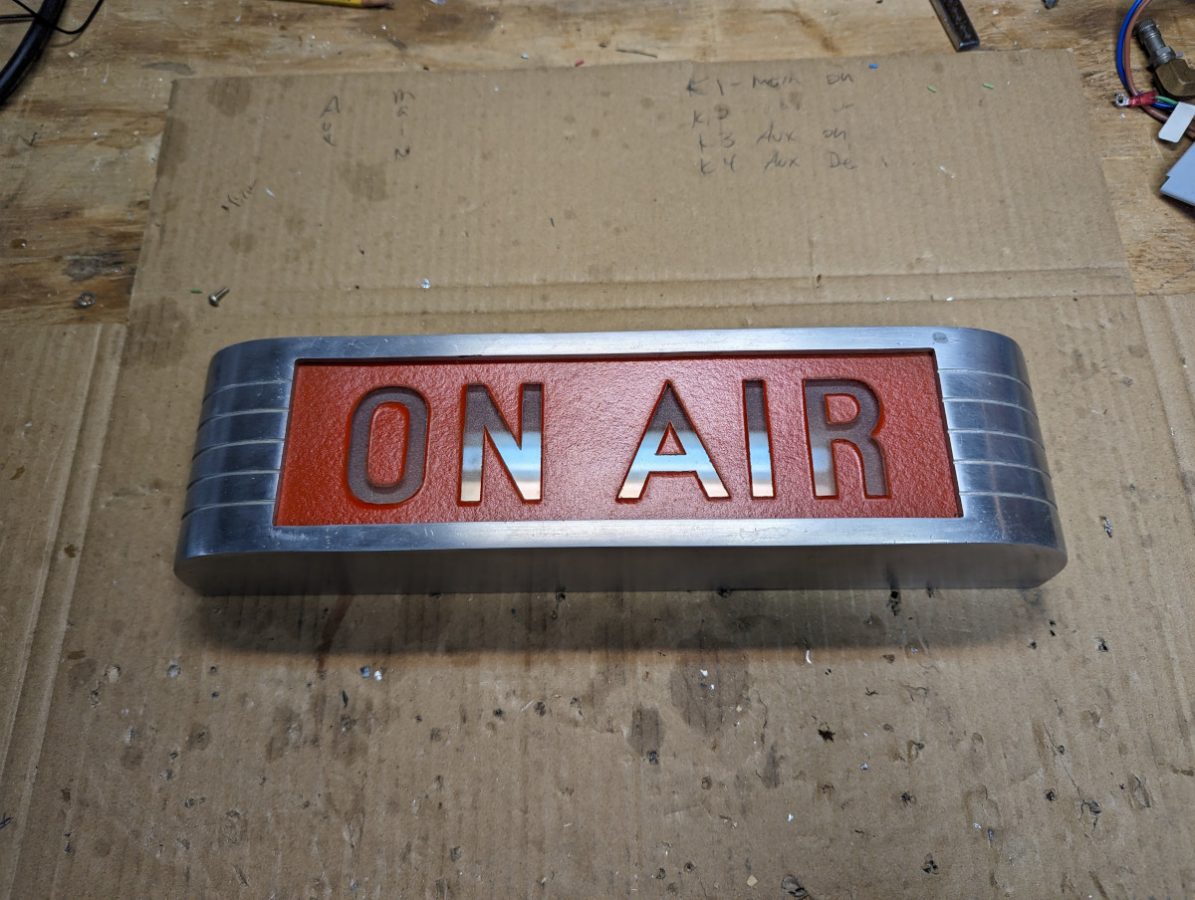

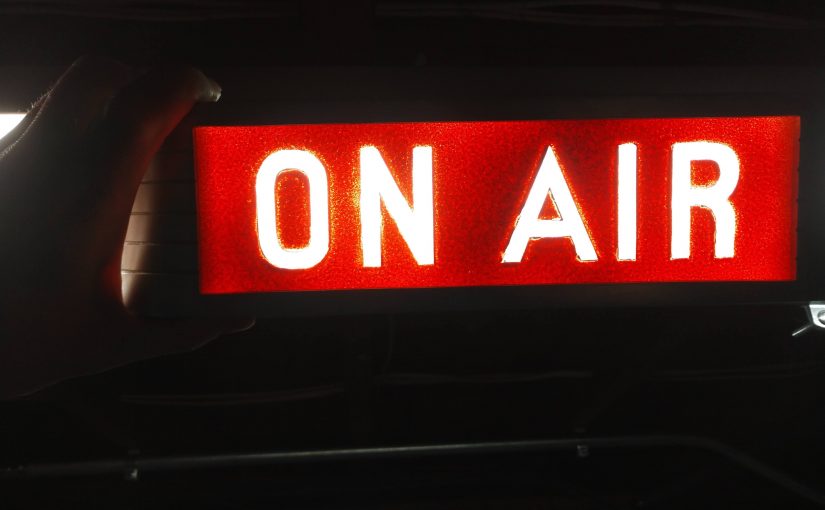

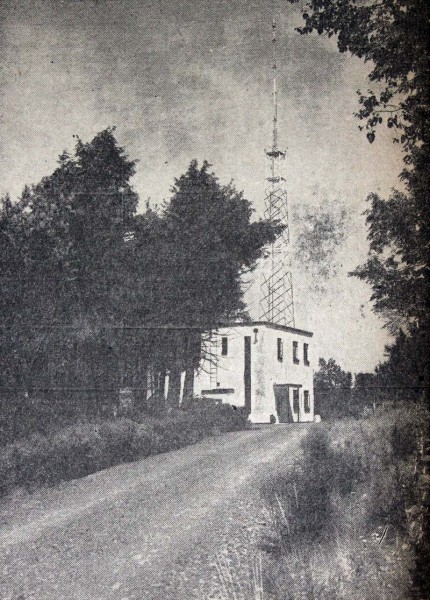

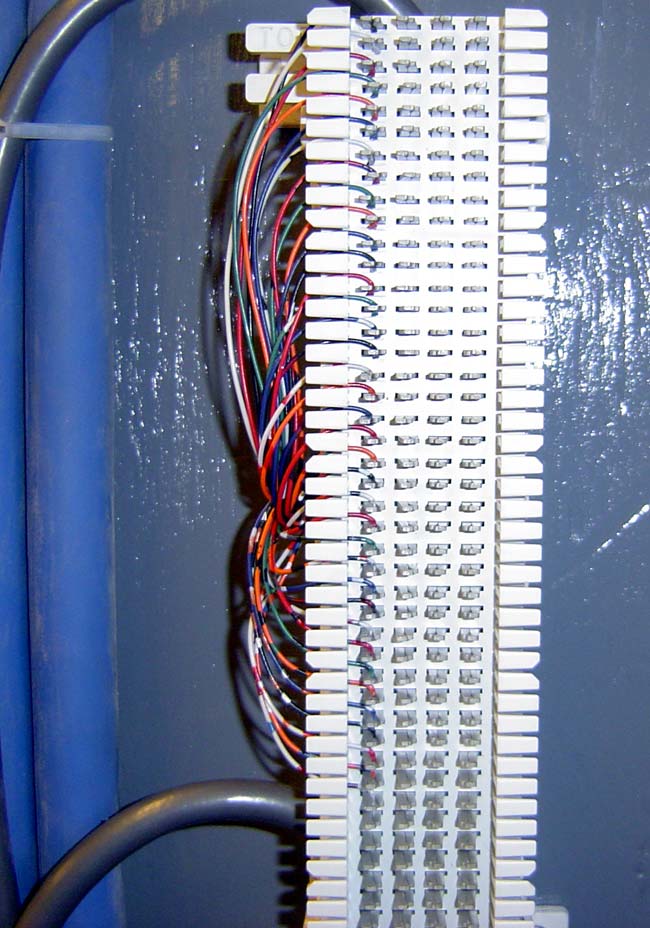
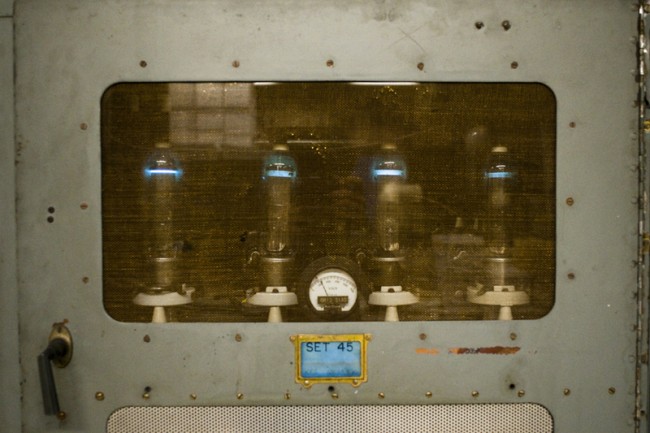
That’s lovely work, Paul!
Thank you, BJ. Now I need to find a home for that last warning light.
Those bring back memories, Paul. When I engineered the kilowatt AM Stereo daytimer the original production studio had one of those above the hallway window. I bet it’s lost to time as the station moved in the early 90s and being donated to a local university.
Curious about you choosing that particular LED module instead of opting for one or more strips. I have a reproduction which also has an older incandescent lamp and plan on using a couple of LED strips and possibly a defuser to soften the light just a touch.
Hey there, Bill. I think it was just what was available for little money at the time. The LED strips would have been a better idea.
I made the mistake of checking what these go for on eBay… yikes!
They look great, I wonder if there’s any clever way to diffuse the LEDs you used? Like spraying the entire interior with a reflective coating and then putting a mirror of sorts in front of the LEDs?
Thanks! It might be easier to replace that LED panel with an LED strip. The studio owner is happy with it the way it is, but I will look into a better light solution for the red unit.